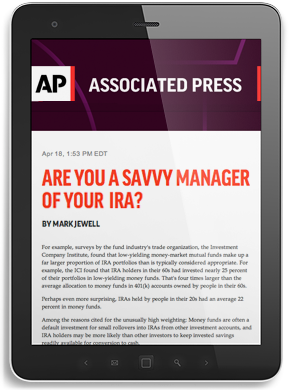Tick, tick, tick: Fannie Mae employees must decide by June 4 on retirement assets

Rebalance’s Managing Director, Scott Puritz, counsels current and former Fannie Mae employees, as they make one of the most important financial decisions of their lives.
Investment advisers and brokers in the Washington, D.C., area may be getting new business from current and former employees of a federal housing agency who must decide within the next week what to do with their retirement funds.
The Federal National Mortgage Association, or Fannie Mae, as well as the Federal Home Loan Mortgage Corp., or Freddie Mac, terminated their defined-benefit retirement programs at the end of 2013.
Fannie Mae gave current and former employees four options to reallocate their retirement funds — lump-sum distribution, an annuity, the Fannie Mae 401(k) plan or an individual retirement account. The window for moving assets opened on April 21 and will close on June 4, according to Scott Puritz, managing director of Rebalance, an investment advisory firm based in Bethesda, Md.
“This is one of the most important economic decisions they can make in their lives, and they have to do it in a short amount of time,” said Mr. Puritz, who has counseled current and former Fannie Mae workers.
Mr. Puritz estimates that thousands of people are deciding what to do with their Fannie Mae retirement funds and their assets total approximately $1.4 billion.
As of the end of January, Fannie Mae had 7,600 employees. But its defined-contribution pension plan had been closed to new entrants in 2011.
“We have provided resources and support to help our employees make informed decisions about how to receive their benefit payments,” Andrew Wilson, Fannie Mae senior director of media and external relations, wrote in an email. “Fannie Mae continues to offer a cost-effective and competitive retirement program for our employees.”
Mr. Wilson did not respond to questions about the number of Fannie Mae workers and retirees affected or the total amount of retirement assets that they hold.
Advisers such as Mr. Puritz are working with the Fannie Mae community at a tense time. The biggest challenge “first of all, is calming them down, making people feel at ease,” he said. Mr. Puritz tries to steer most Fannie Mae employees away from annuities. “It quickly becomes a no-brainer that that is not a good choice,” he said. “People are not understanding what an annuity is and a large part of what we do is educate people.”






